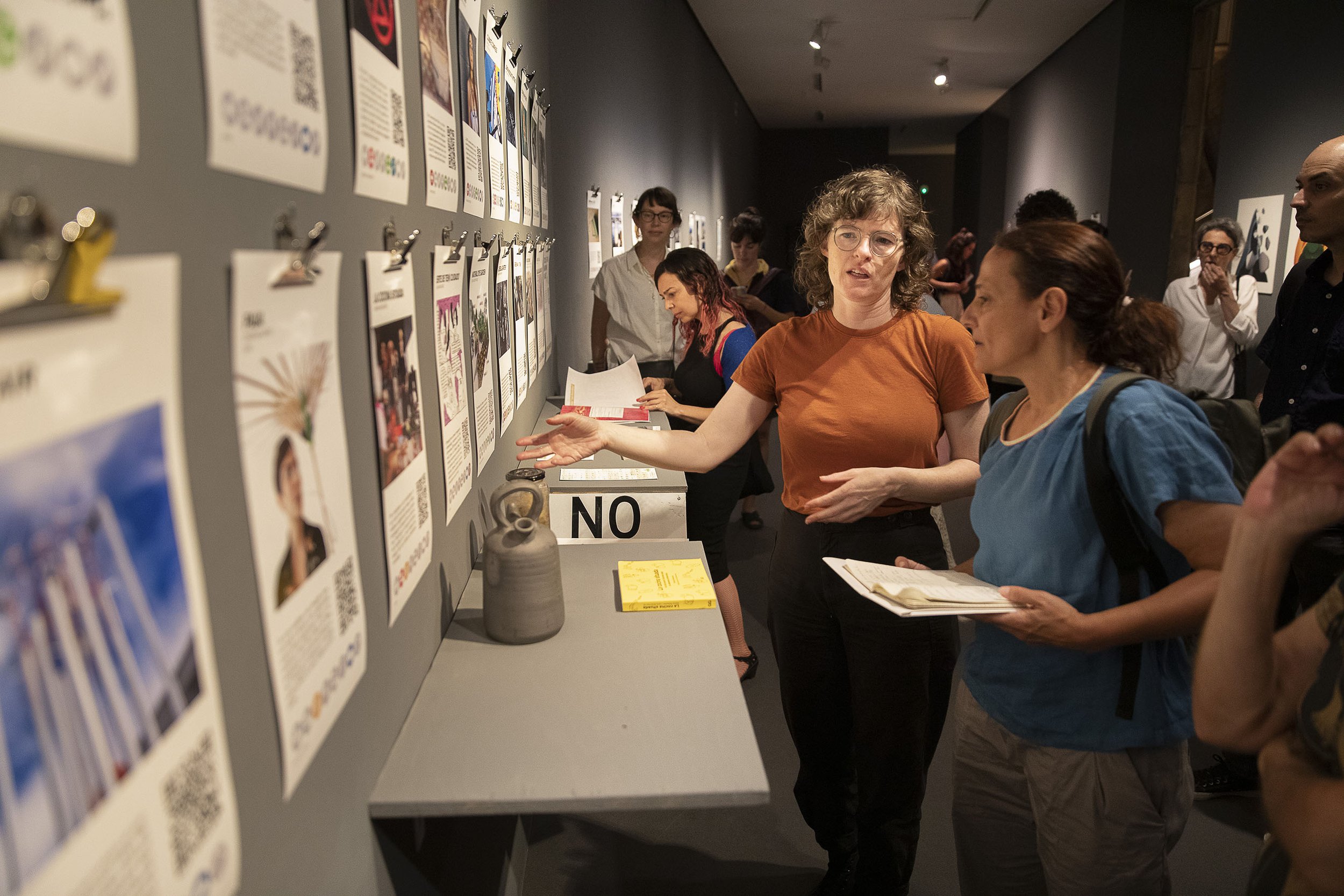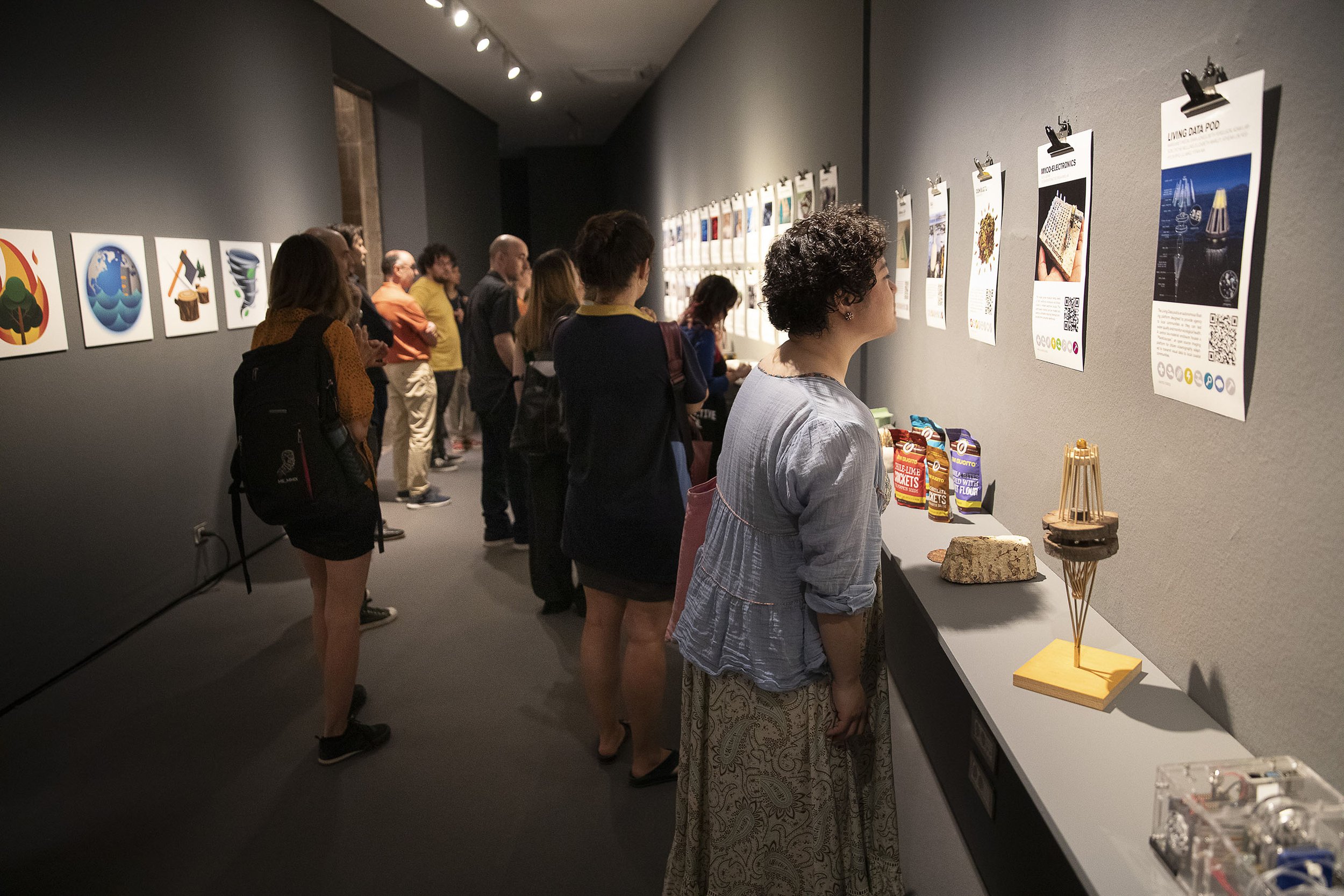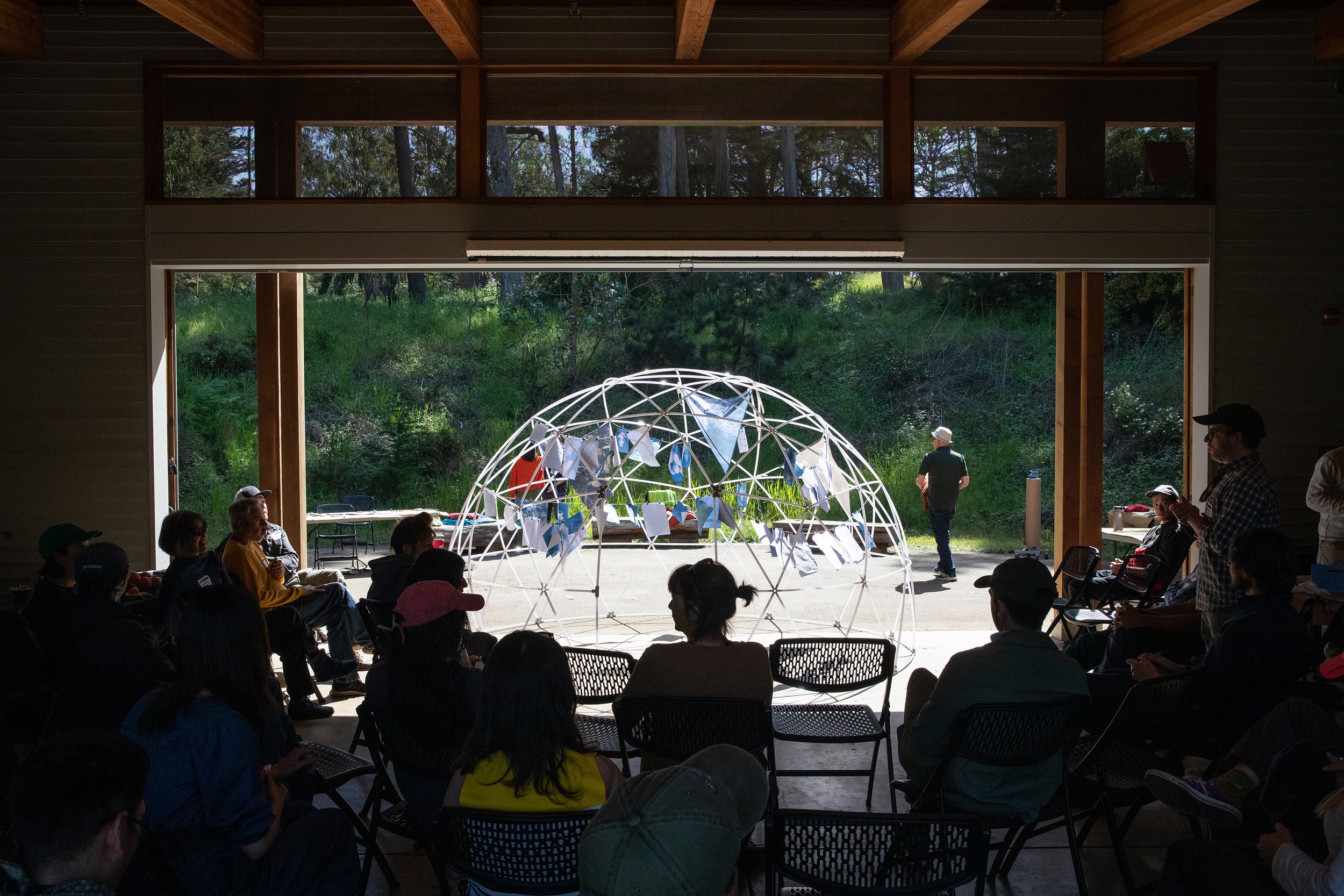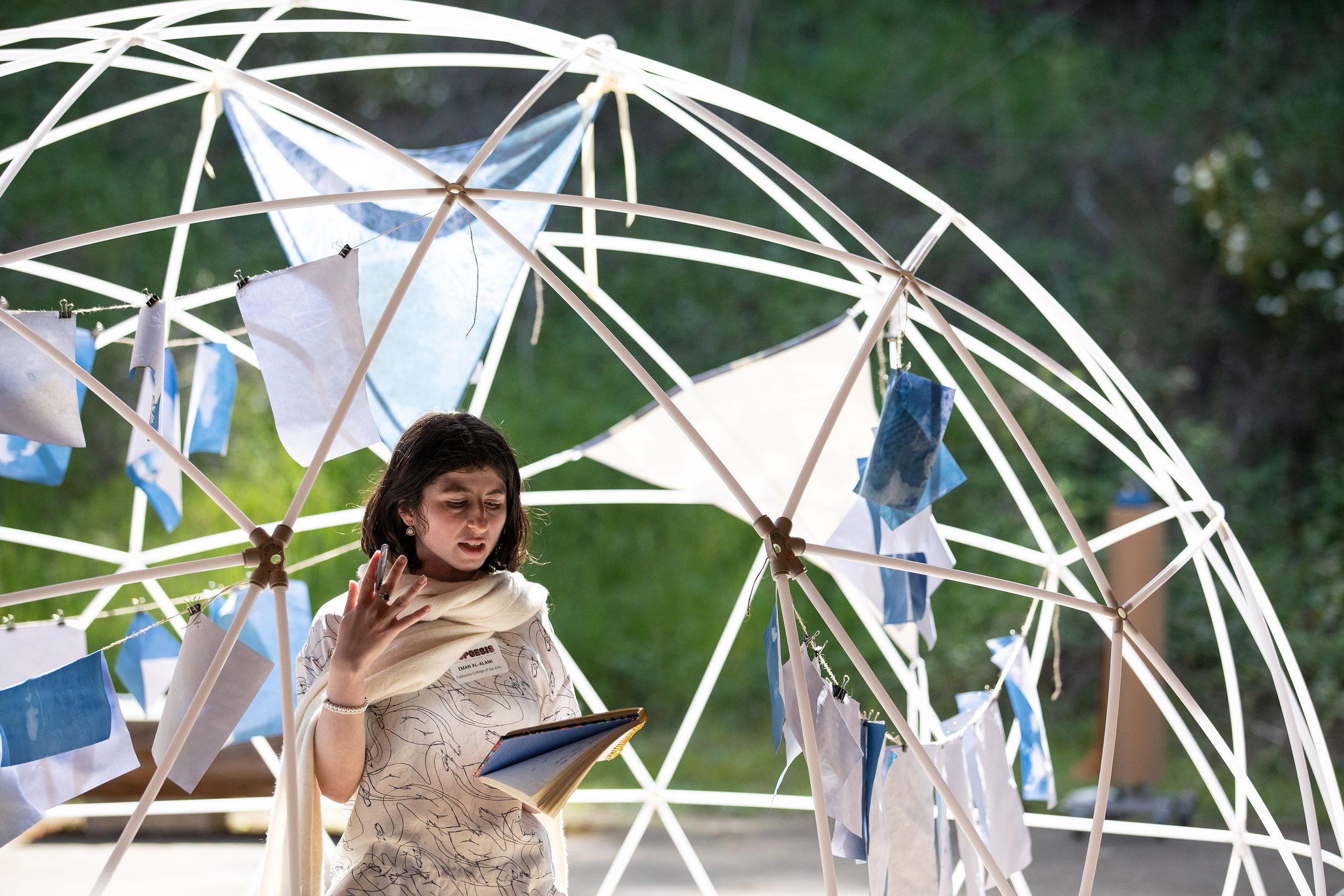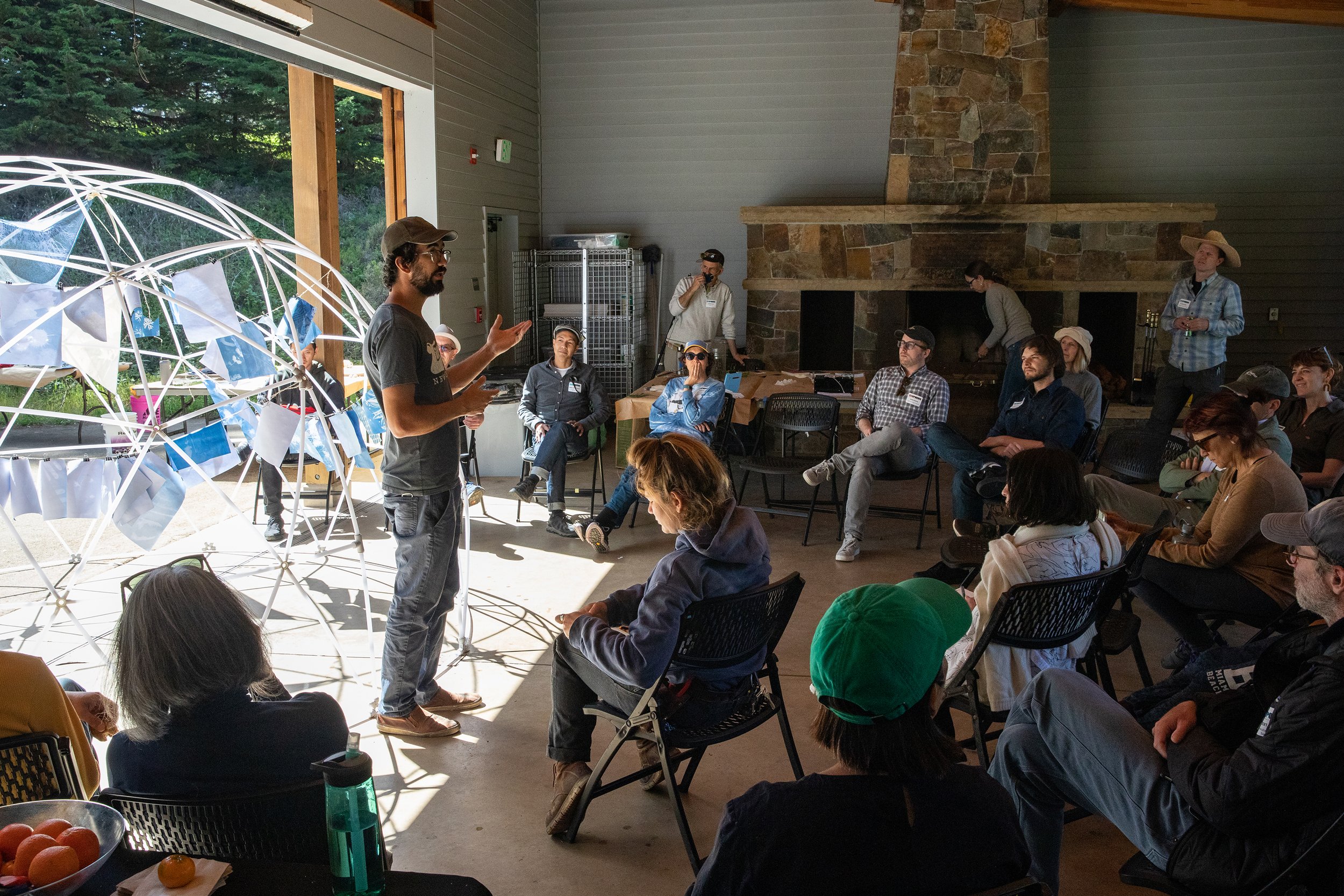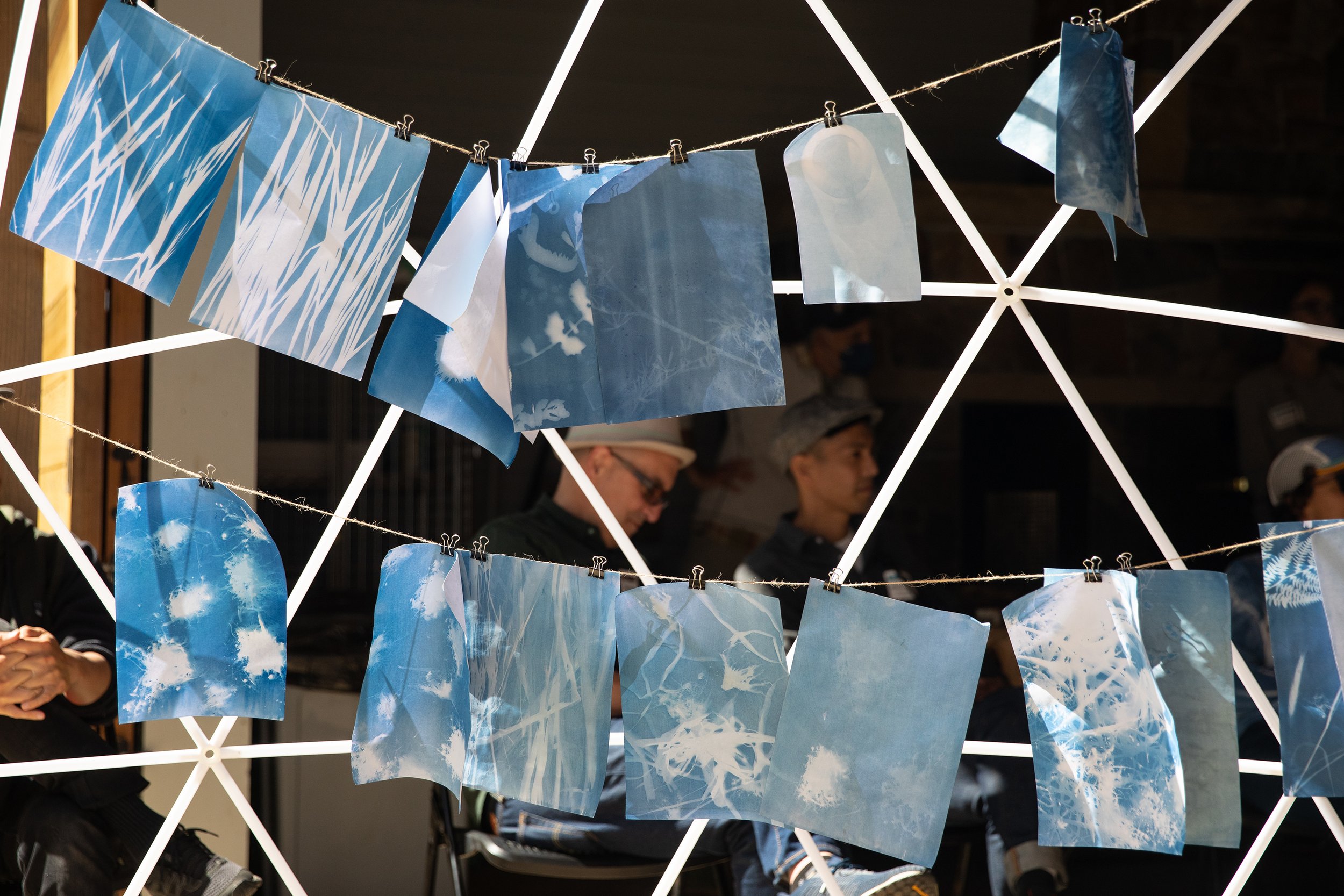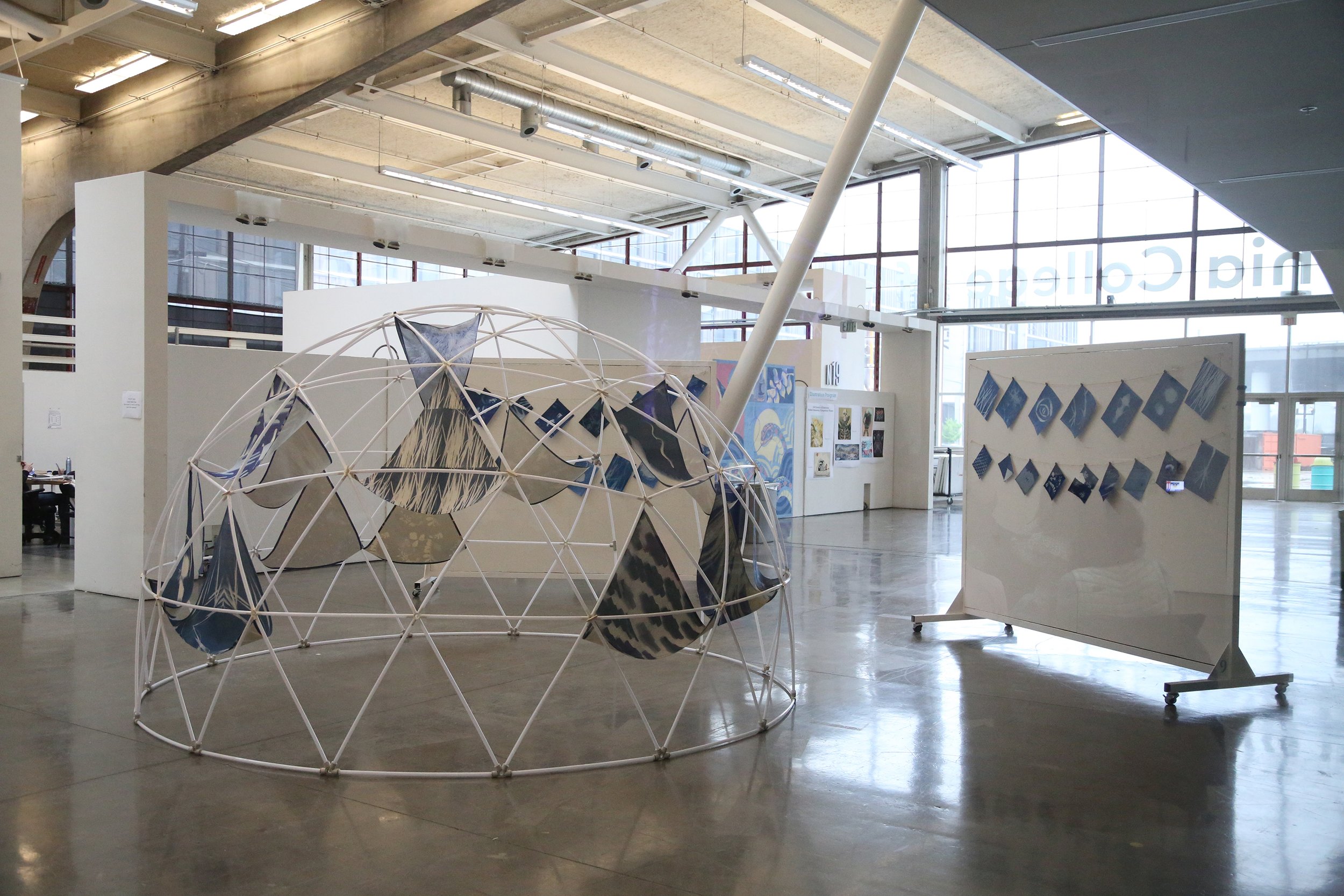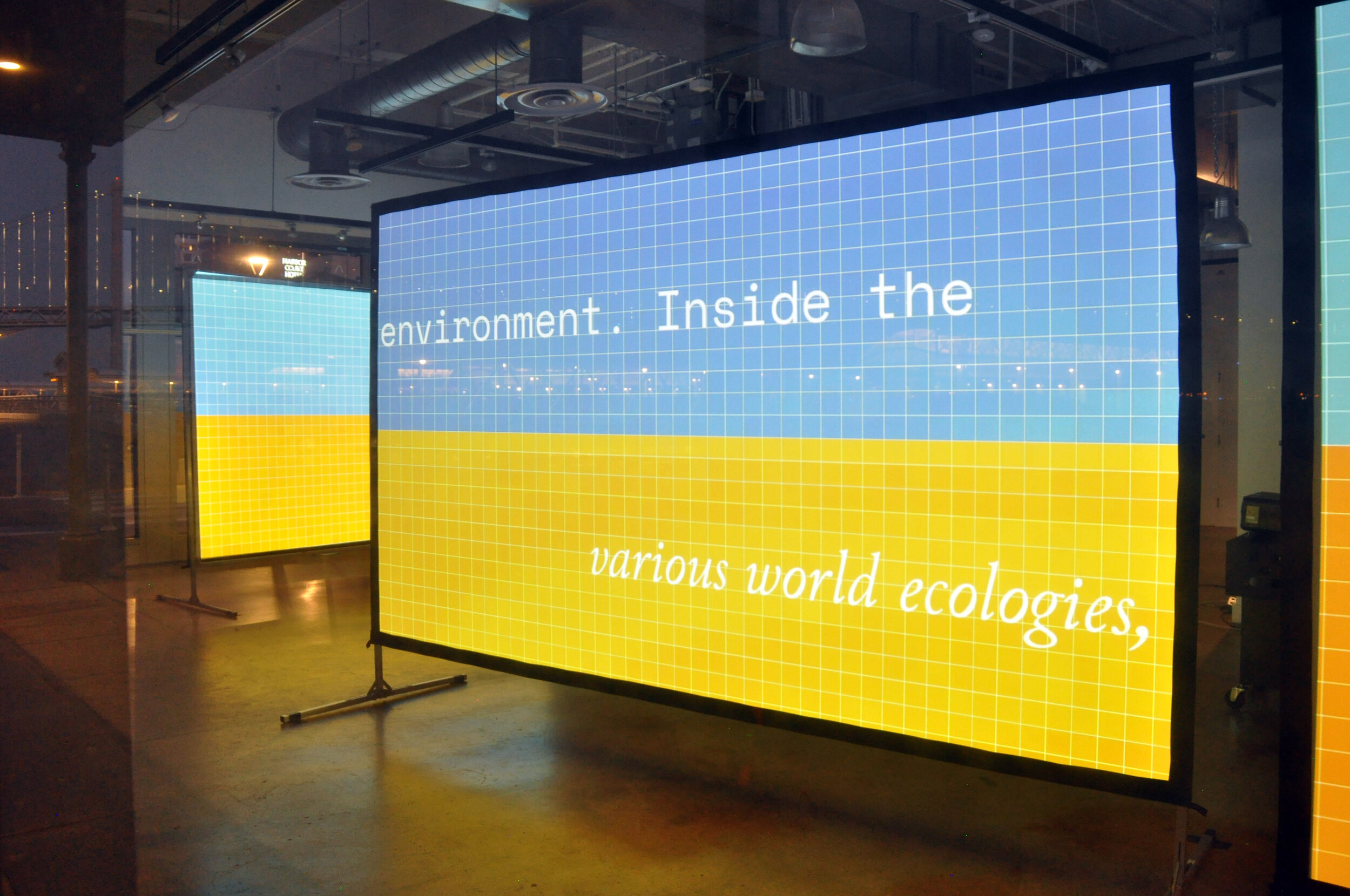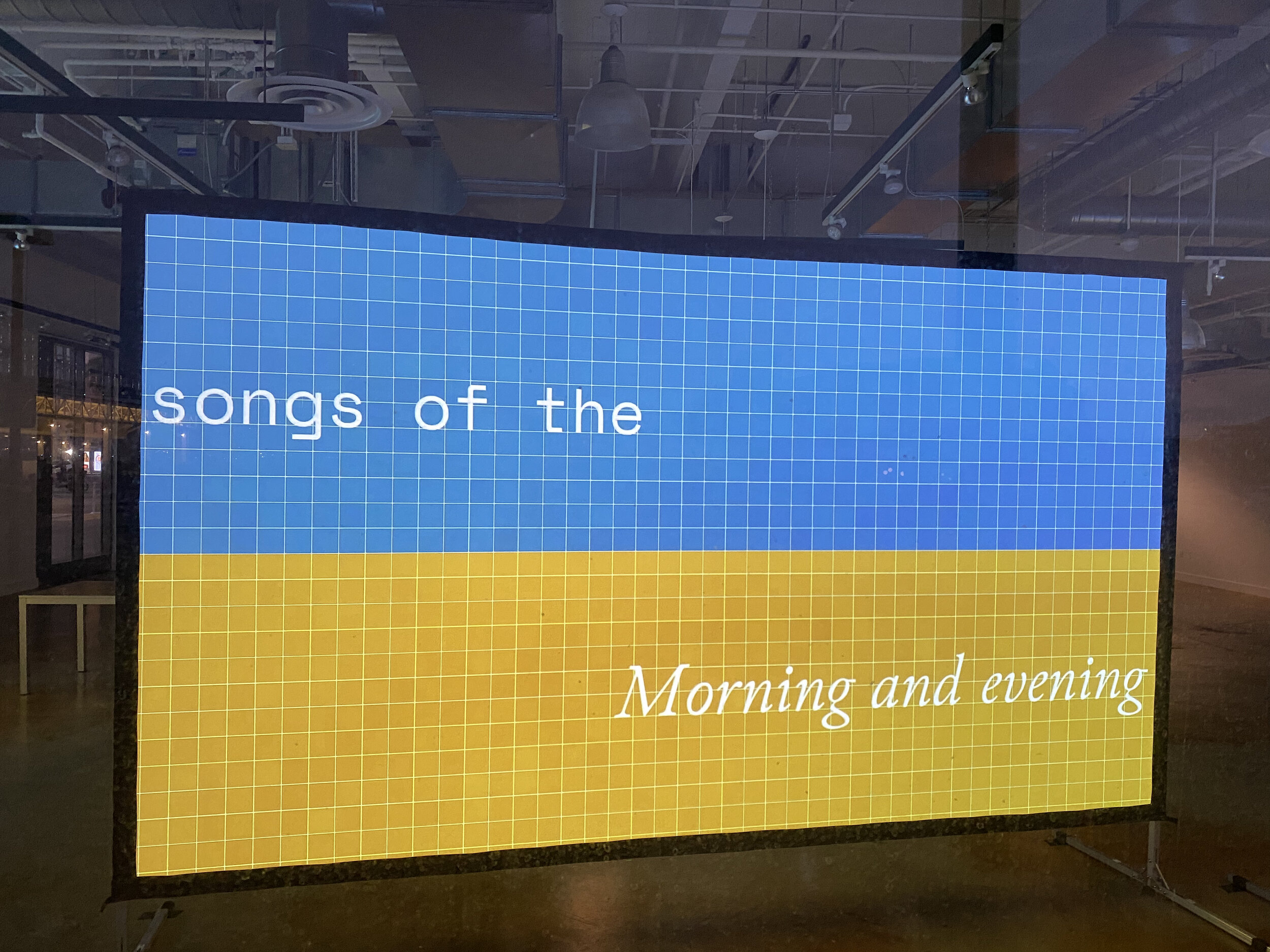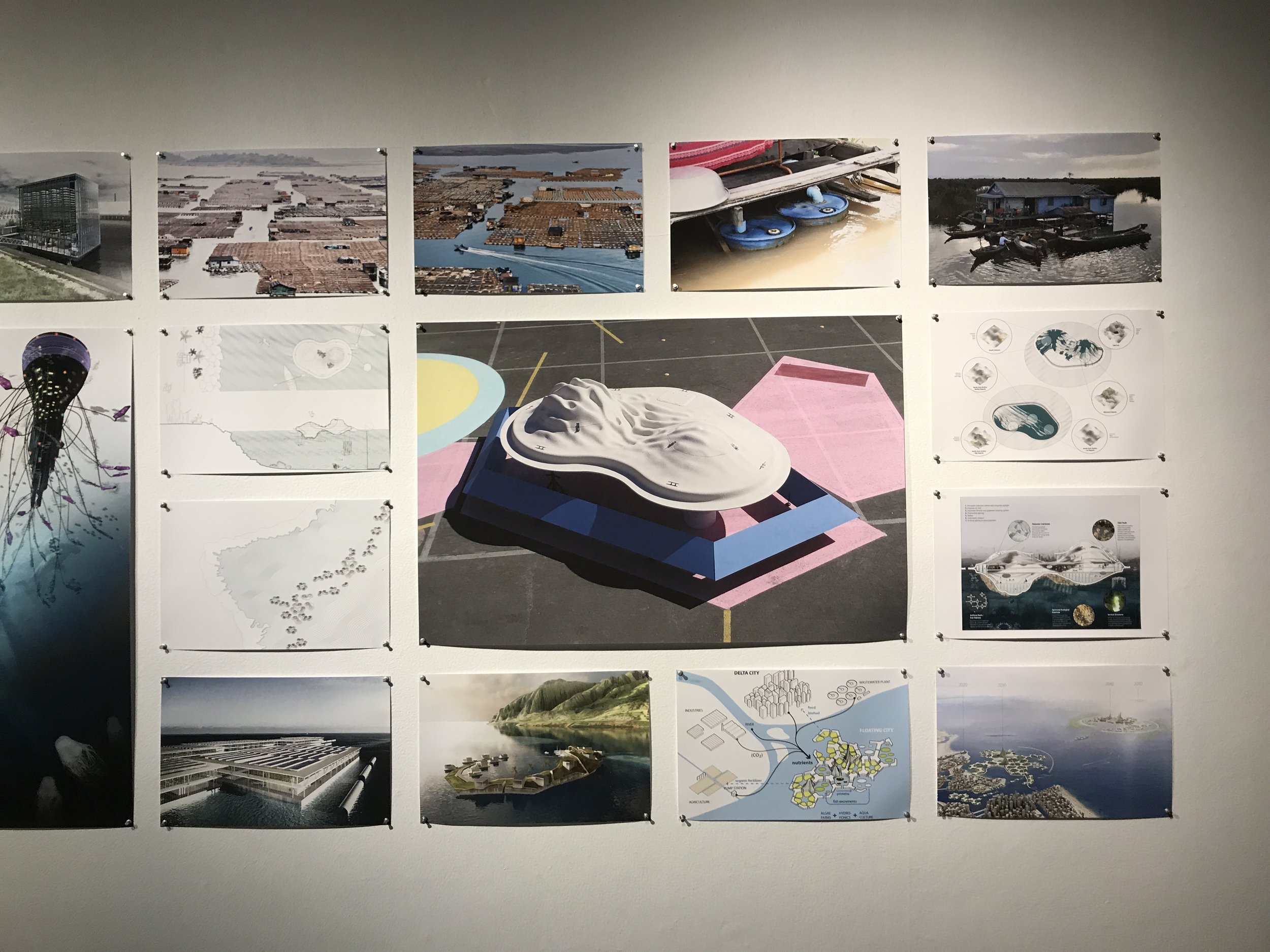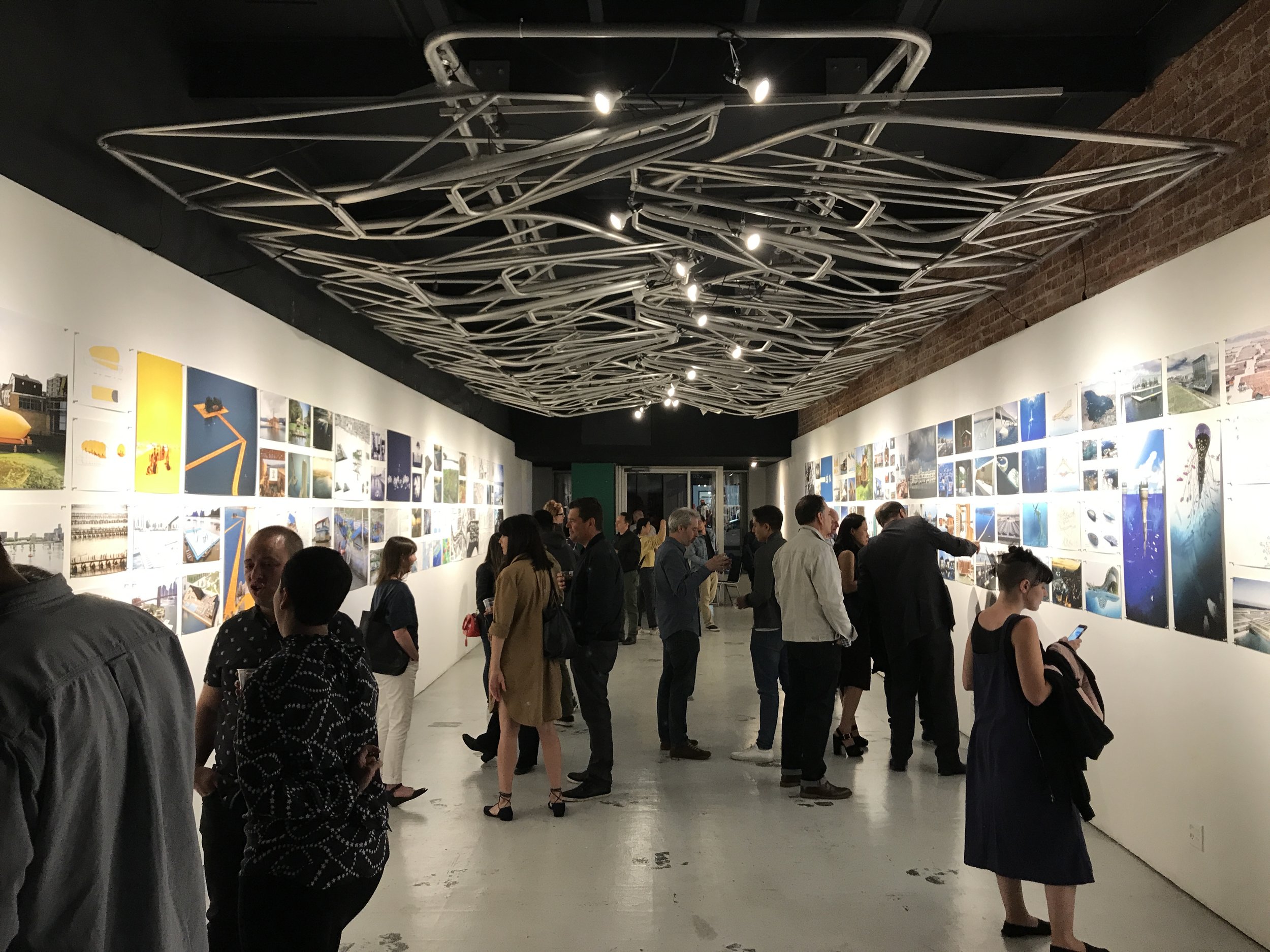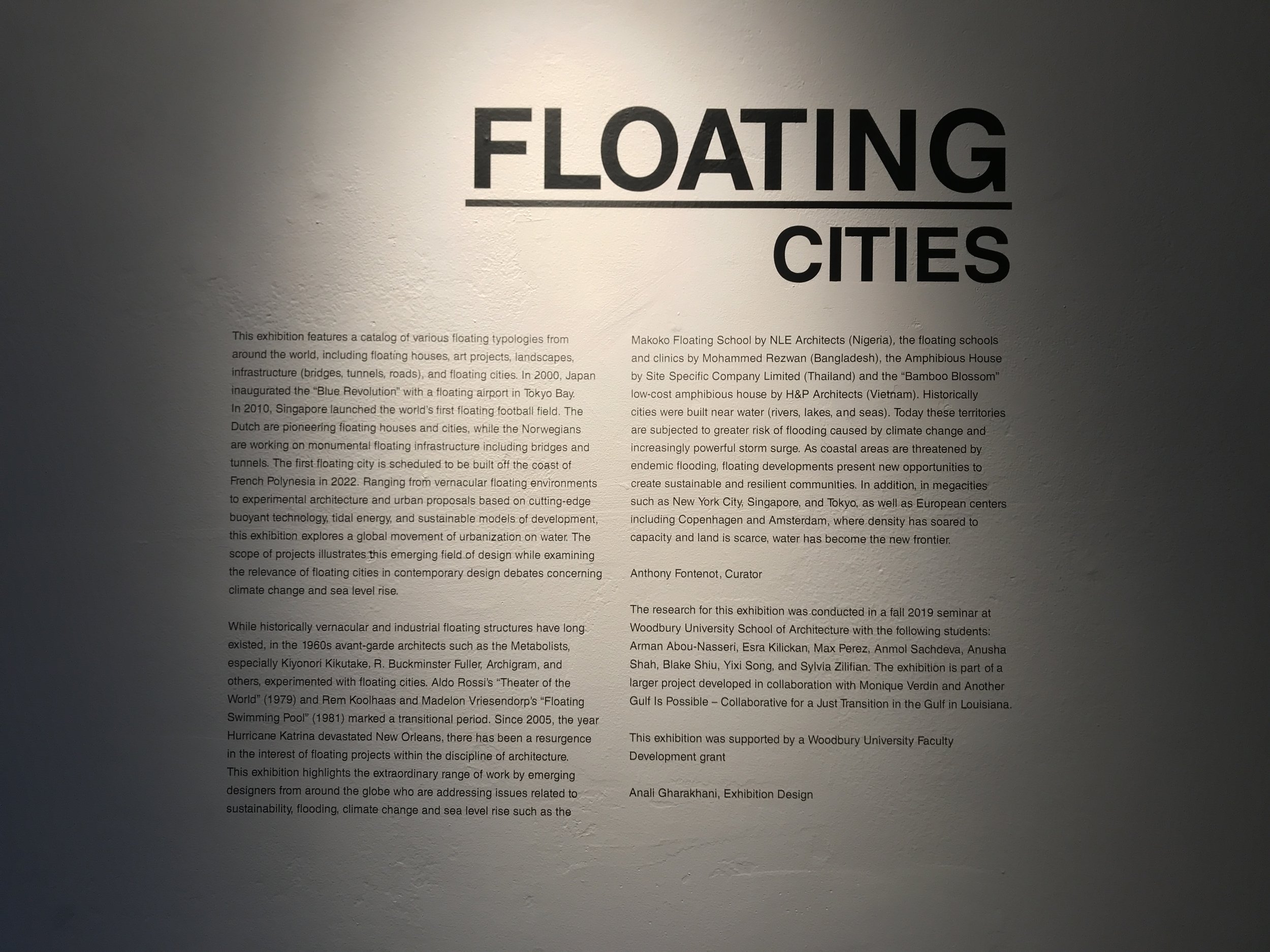This summer, the Buoyant Ecologies Float Lab is featured in the Houses that Can Save the World exhibition at Kunstraum München in Germany. The exhibition, which is curated by Courtenay Smith and Sean Topham and runs from June 16 to July 31, 2022, showcases a range of innovative housing types that represent sustainable and dignified models of living. The exhibition is based on the book of the same name that is being published by Thames & Hudson, London, in September 2022.
AEL Research Featured in Barcelona Exhibition "Tools for a Warming Climate"
Research by the Architectural Ecologies Lab is featured in the exhibition “Tools for a Warming Climate,” part of the larger show “La Irrupció" organized as part of the 2022 International Symposium on Electronic Art in Barcelona, Spain. The exhibition, installed at Arts Santa Mònica from June 9 to August 20, 2022, features a collection of design projects selected by curators Sara Dean, Beth Ferguson, and Marina Monsonís that provide tools to respond urgently to our planet’s uncertain future through art, activism and technology. AEL work includes the Ecopoesis Dome, Public Sediment, and the Living Data Pod.
2022 Ecopoesis Workshop 'Repairing Time' Held at Presidio, Features Jenny Odell as Keynote
The 2022 Ecopoesis workshop and gathering ‘Repairing Time’ was held in the San Francisco Presidio on April 9, 2022 and featured artist and author Jenny Odell as keynote. Following the event, Odell delivered a public talk on Thursday, April 14 at California College of the Arts in San Francisco.
Odell’s book How to Do Nothing: Resisting the Attention Economy served as the thematic catalyst for the event, challenging us to consider the relationship between climate change and our perception of different scales of time. The workshop participants produced a series of cyanotype prints that experiment with the medium’s time-based qualities as a reflection on tangible ecological change. The intent was to challenge the default “how much time is left” sensibility that characterizes much of climate discourse, and instead explore how thinking across multiple time scales might allow for deeper understandings of the crisis we currently face. Through collective acts of making, the workshop tested creative alternatives of language and imagery that can inspire solidarity.
Following the event, timed to coincide with Odell’s keynote at CCA, enlargements of cyanotypes from the workshop were printed on fabric and installed on the Ecopoesis Dome, a new traveling platform for ecological and climate discourse.
Many thanks to the Golden Gate National Parks Conservancy and Presidio Trust for supporting this event.
"How We Hear Now" Opens at San Francisco Ferry Building
From June 25 to July 10, 2021, the collaborative artwork How We Hear Now was installed for public view at the San Francisco Ferry Building. The artwork was developed by The ECOPOESIS Project, a multi-year initiative led by the Architectural Ecologies Lab and MFA in Writing program at the California College of the Arts. The project was initiated in the early weeks of the COVID-19 pandemic in lieu of the spring 2020 ECOPOESIS symposium/workshop gathering.
How We Hear Now invites participants to engage in audible changes in their environments—to record and transmit how the sounds of both human and nonhuman ecologies may have changed during and after the COVID-19 pandemic’s shelter-in-place orders. This installation of the project includes contributions from both 2020 and 2021; each participant constructed a sound recording of their environment on April 22 (Earth Day) and provided a description of ecological or cultural factors.
Buoyant Ecologies Students Win Merit Award from AIA Los Angeles
Master of Architecture students Marwan Bamasood and Eric Soifer from the fall 2018 Buoyant Ecologies Maldives studio have been selected for a 2x8: Echange Merit Award and $2,500 scholarship by the American Institute of Architects Los Angeles chapter for their project Suitcase Archipelago.
The 2x8: Exchange is a three-pronged program that provides students the opportunity to submit their work for the competition, be a part of the student exhibition, as well as provide scholarship opportunities. Now in its 13th iteration, the competition received participation from 16 schools throughout the state to participate in the annual show. Each school selects two students to represent the program in the competition. The winning student projects are on exhibition at the Helms Design Center in Culver City through June 7.
The Buoyant Ecologies Maldives advanced Integrated Building Design studio, led by CCA faculty Margaret Ikeda, and Evan Jones, is part of an ongoing research partnership between CCA, Autodesk's Pier 9 Workshop, Kreysler & Associates, and the Benthic Lab at Moss Landing Marine Laboratories. The research is focused on developing innovative material approaches to resilient waterfront structures.
Suitcase Archipelago proposes an expandable and adaptable floating community for the Maldives that considers the culture of its residents in the design of a kit of reconfigurable parts that allow for a variety of architectural scenarios. From the jury citation: "The strongest asset of this project is the programmatic thinking and the systematic approach to how the components of this resort interconnect and how they approached sustainability, which is otherwise a byproduct or a waste, and turning into a positive by creating a consumable product for the resort. There was a really big depth of thinking beyond just the esthetic and the architecture.”
Floating Cities Exhibition Opens in Los Angeles
On April 13, the exhibition Floating Cities, curated by Anthony Fontenot, opened at the WUHO Gallery in Los Angeles. The show features a catalog of various floating typologies from around the world, including floating houses, art projects, landscapes, infrastructure (bridges, tunnels, roads), and floating cities. It includes the Buoyant Ecologies Float Lab, a prototype for a floating breakwater designed by the Architectural Ecologies Lab. Also featured in the show are projects by Ant Farm + WORK AC, Lateral Office, Aptum Architecture with CEMEX Research Group, Archigram, Bjarke Ingels Group, Blue Frontiers, Rem Koolhaas and Madelon Vriesendorp, Kohn Pedersen Fox Associates, MOS Architects, NLE Architects, Morphosis Architects, and others.
The show is open until May 5. Later this year it will travel to Louisiana and Miami.
Buoyant Ecologies Float Lab Debuts at San Francisco Exhibition
The Buoyant Ecologies Float Lab, a project designed by CCA faculty Adam Marcus, Margaret Ikeda, and Evan Jones, is featured in the exhibition Designing Material Innovation, which runs from September 28 to December 23 at California College of the Arts in San Francisco. The project is a prototype for a new kind of resilient coastal infrastructure: floating breakwaters that incorporate an ecologically optimized fiber-reinforced polymer composite substrate to mitigate wave action and contribute to marine diversity.
Designing Material Innovation, an exhibition and symposium organized by Jonathan Massey, exhibits five full-scale architectural prototypes and pavilions that exemplify new approaches to material, fabrication, and design. Created through collaborations between architects and industry partners, these works combine technological innovation in materials research and fabrication with aesthetic and ethical approaches to form and appearance. The exhibition is designed by Clark Thenhaus / Endemic and, in addition to the Float Lab, features projects by T+E+A+M, APTUM Architecture, Matter Design, and Matsys.
The Float Lab project is a partnership with the Benthic Lab at Moss Landing Marine Laboratories and Kreysler & Associates, a global leader in composites manufacturing. It builds upon three years of research and proof-of-concept prototypes that have been installed and monitored underwater for their ecological performance. The exhibition runs through December 2017, and the Float Lab will be deployed in the San Francisco Bay in 2018.
Buoyant Ecologies Research Exhibited at ACADIA 2016
The Buoyant Ecologies research into optimized ecological substrates led by Adam Marcus, Margaret Ikeda, and Evan Jones, was featured in "Posthuman Frontiers: Data, Designers, and Cognitive Machines" — the juried exhibition accompanying the 2016 conference of the Association for Computer Aided Design in Architecture (ACADIA), hosted this year by University of Michigan's Taubman College of Architecture and Urban Planning. The opening reception for the exhibition was held on Thursday, October 27 at the Liberty Research Annex Gallery in Ann Arbor.
Buoyant Ecologies Exhibition Opens at Autodesk Gallery
On March 31, the Buoyant Ecologies exhibition opened at the Autodesk Gallery in San Francisco. The exhibition displays the work by students from the fall 2014 CCA Architecture Integrated Studio taught by faculty Adam Marcus, Margaret Ikeda, and Evan Jones. The studio explored speculative proposals for a floating expansion of Autodesk's state-of-the-art Pier 9 Workshop along San Francisco's Embarcadero waterfront. The opening event included short talks by CCA Dean of Architecture Jonathan Massey, project leaders Marcus/Ikeda/Jones, Noah Weinstein and J. Sassaman of Autodesk, ecology research partner John Oliver of Moss Landing Marine Laboratories, and fabrication research partner Bill Kreysler of Kreysler & Associates.
The exhibition will be up until May 1; see the Gallery website for hours. For more information on the ongoing Buoyant Ecologies studio research, see this link.






